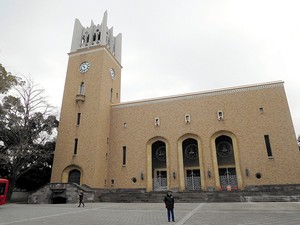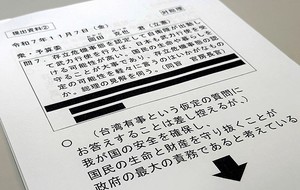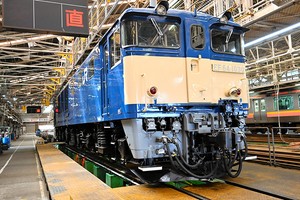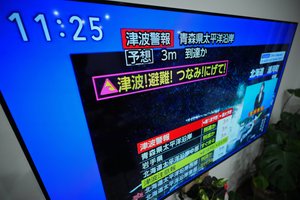By KAZUMICHI KUBOTA/ Staff Writer
March 19, 2024 at 15:30 JST
 Three Vietnamese workers at Innoshima Tekko Ltd., a shipbuilder in Onomichi, Hiroshima Prefecture, obtained the Type 2 specified skilled worker visa in 2023. (Asahi Shimbun file photo)
Three Vietnamese workers at Innoshima Tekko Ltd., a shipbuilder in Onomichi, Hiroshima Prefecture, obtained the Type 2 specified skilled worker visa in 2023. (Asahi Shimbun file photo)
Japan expects to take in 820,000 skilled workers from overseas over the coming five years, sharply expanding previous projections to address growing labor shortages, sources said.
The figure is more than twice that for the five-year period through 2024 set in 2019 when the “specified skilled worker” visa was introduced.
The government plan, presented March 18 to the ruling Liberal Democratic Party for endorsement, adds four new sectors to the list of industry fields where visa holders can work.
The Kishida Cabinet is expected to approve the plan before the start of the new fiscal year on April 1, the sources said.
The visa was introduced in 2019 under a program to accept foreign workers in selected industries where efforts to improve productivity and secure a domestic work force do not alleviate labor shortages.
At the time, the government estimated that a maximum of 345,150 foreign workers would arrive in Japan over five years through 2024 with the new status of residence.
The latest projection for five years through 2029 represents a 2.4-fold increase from the previous plan.
Every five years, the government determines the number of workers it anticipates for each industry sector to prevent employment from being thrown into turmoil by an excessive intake.
The government plans to add road transportation and railways, as well as the forestry and timber industries, to 12 existing fields for the Type 1 specified skilled worker visa, which includes construction, nursing care and accommodation, the sources said.
As of the end of last year, 208,462 foreign nationals were in Japan on the specified skilled worker visa.
The number falls way short of the 2019 projection, in part because of restrictions on entry to Japan during the pandemic.
In a few exceptional sectors, however, initial projections proved to be conservative.
The manufacturing of food and beverages anticipated 34,000 foreign workers over five years through 2024.
But more than 60,000 were working on the specified skilled worker visa at the end of 2023 as the stay-at-home lifestyle triggered by the pandemic buoyed demand for frozen food and other items.
For five years through 2029, all industry sectors expect to accept more foreign workers than they anticipated in 2019, or at least the same number.
The manufacturing industry, for example, expects more than five times the number it projected in 2019.
“The figure reflects the move to increase domestic production because it became difficult to procure components from overseas due to the pandemic,” a government official said.
Type 1 visa holders can stay in Japan for a maximum of five years but cannot live in Japan with their families.
If they pass a skills test, they can upgrade their status of residence to Type 2, which allows them to bring their families to Japan. The visa can be renewed any number of times.
Except for 37 Type 2 visa holders, all specified skilled workers who were in Japan at the end of 2023 were on the Type 1 visa.
The government in June increased the number of industry fields for the Type 2 specified skilled worker visa from two to 11 because of labor shortages in more industry sectors.




















A peek through the music industry’s curtain at the producers who harnessed social media to help their idols go global.
A series based on diplomatic documents declassified by Japan’s Foreign Ministry
Here is a collection of first-hand accounts by “hibakusha” atomic bomb survivors.
Cooking experts, chefs and others involved in the field of food introduce their special recipes intertwined with their paths in life.
A series about Japanese-Americans and their memories of World War II